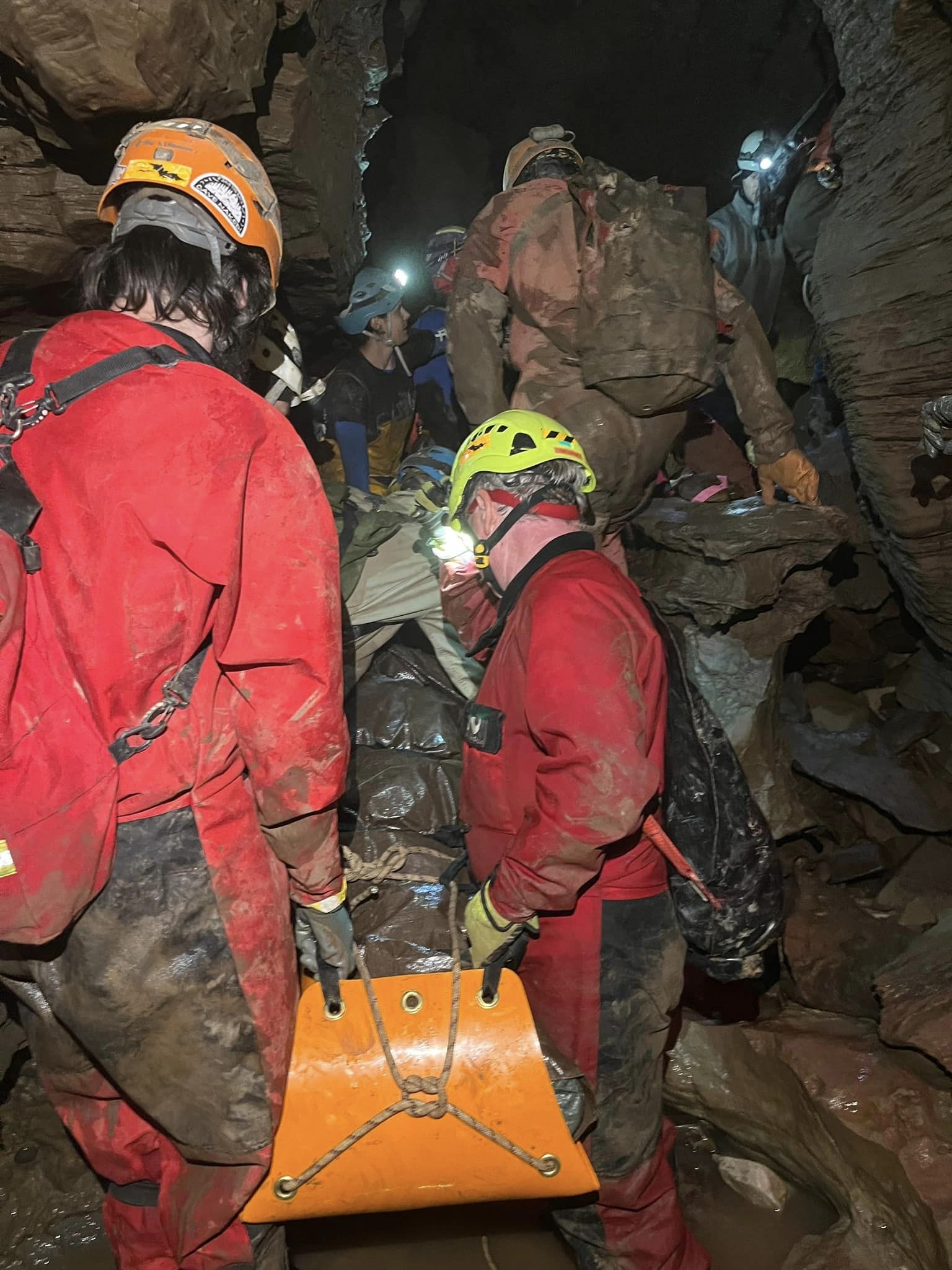If you have an emergency situation, first contact your local emergency services by dialing 911. After calling 911, you should contact the Regional Coordinator of the Eastern Region of the NCRC and advise them of the situation by email at eastern [at] ncrc [dot] info. This will allow a timely alerting of caver resources, who may be available to assist the local emergency services. To assist us in helping you during a caving incident, it is strongly suggested that you use a Caver Alert Information Sheet and leave it with your emergency contact person before you go caving. Eastern Region email — eastern [at] ncrc [dot] info
UNDERGROUND ACCIDENTS
What to Do in an Emergency
So your on a caving trip and you or a member of your team becomes injured. In the minutes after this happens you must do several things to insure the safety of the injured and the team. The following information will help anyone who caves and should be known by the trip leader.
— Protect yourself first then your patient. Don’t become a victim yourself.
— Ensure that you can obtain access to the injured person safely. Check for unsafe conditions before entering an accident site and correct all dangerous conditions.
— Determine extent of injuries and stabilize the patient if you have the skill. Treat for hypothermia prevention.
— Determine if the person can walk/crawl out, can be assisted to walk/crawl out, or if you will need assistance to get the person out. If there is any chance of spinal injury do not move the patient accept to prevent further injury.
— If the injury is serious, use your own judgement. Begin to take notes about your patient. Pulse, respiration, and skin temperature are minimum, clearly time and date all data.
— If you need outside help, send for it or wait for your backup person to notify authorities. Remember that your backup person can only call for backup if they know exactly which cave you are at and when to expect your return from that cave.
— Inventory all equipment in your group to determine what is available; to help your patient survive, to aid your survival, and determine what may be needed from the outside. Get the information to the surface.
— When possible two people should be sent out for help, they should leave as much food and water and dry clothing as possible for the people that remain with the patient. They should carry a copy of all notes concerning patient condition and location. Include information about your needs as well as what you have on site to treat the patient with. Your messengers need to know emergency telephone numbers, have keys to vehicles, and have knowledge and experience to get out safely.
For Additional Information Contact Earl Suitor wvcaver216 [at] gmail [dot] com

